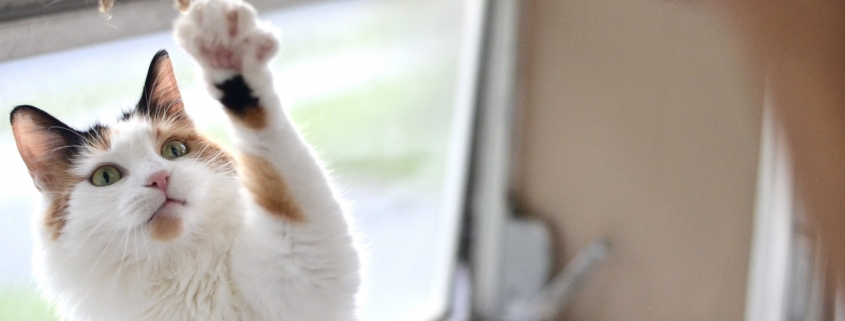Uncovering the Hidden Signs of Arthritis in Cats
Cats are notorious for hiding their discomfort very well, so it’s important to be aware of subtle changes in their behavior or routine that may indicate an underlying problem.
Unfortunately, signs of arthritis in cats are often dismissed as normal signs of aging or go unnoticed altogether.
Our job as pet owners is to pay close attention to their behaviors, so we can easily pick up on the tiny clues that they aren’t feeling their best. Since every cat will show discomfort differently, here are some behaviors to keep an eye out for that may indicate joint pain.
Changes in litter box habits – Since most litter boxes have sides tall enough that your cat has to lift their legs and/or jump to enter/exit, they may seek alternative places to do their business that are easier to access. Similarly, they may struggle to settle into a comfortable position inside the litter box, or you may find that their aim is a little ‘off.’
Expert tip: Litter box habits offer a first line of observation into your cat’s health and well-being. If you observe changes in their routine, it’s best to schedule a vet visit as soon as possible.
Changes in sleep patterns – Cats tend to develop strict routines, including specific preferred places to nod off throughout the day. Suppose your kitty historically likes to sleep up off the floor (my cat prefers the tall back of our couch) and suddenly prefers lower ground (often tucked out of sight). They may be too stiff to climb up or down from that place. Additionally, if the cat becomes more interested in hiding overall, that can be another red flag that they aren’t feeling great.
Avoiding the stairs – This behavior mimics how dogs display joint pain — hesitating or struggling to go up or come down the stairs. This is particularly difficult with stiff joints if the stairs are bare (not carpeted) because they offer less cushion and traction for unstable joints. If kitty seems to suddenly spend all day on one level of the house, consider that they may need extra joint support.
Less interest in playtime – While it’s common to observe your cat’s activity level decrease as they age, it’s not always simply because they’ve lost interest. Cats with healthy joints should still be able to jump, climb, and run for short play sessions throughout the day. If your cat seems interested in playing but prefers to participate without moving from their lounging spot, joint pain may be to blame.
Irritability – Perhaps the most common indication of discomfort is a shift in their personality. Cats who don’t feel well will choose to seclude themselves as much as possible and become easily annoyed when they feel threatened. This can be as subtle as pinned ears when you pet them or a hiss if you pick them up.
There are several ways to prevent and manage joint pain for cats:
- Maintain a healthy weight with the right food and an appropriate feeding schedule (avoid free-feeding).
- Reduce inflammation with a diet high in omega-3 fatty acids and rich in antioxidants to avoid cell degeneration.
- Maintain cartilage with glucosamine and chondroitin (many options are available for even the pickiest kitties!)
- Ensure your cat has active playtime daily to keep their body moving.
- Provide supportive bedding and extra warmth during cold months.
- Provide litter boxes with at least one low side that is easily accessible.
If you’re not sure where to start, stop in to speak with one of our experts for tips!






